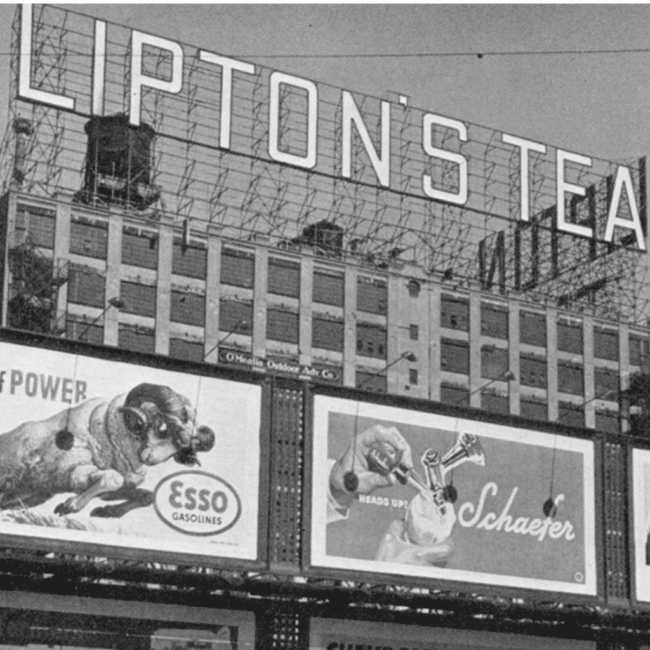The city of Hoboken has undergone many transformations since its founding. The most noticeable change is the evolution of the town’s architecture, as high-rise condominiums neighbor 19th century row-homes. Architectural styles that can be seen around town include Victorian brownstone, German gothic, Romanesque, art deco, colonial, and more. Some buildings have remained the same on the outside, while others have been knocked down, with a newer building taking its place. The Hoboken Historical Museum, located at 1301 Hudson Street, has documented the changes of the buildings in Hoboken over the year via its exhibition, “Greetings from Hudson County: A Postcard History Then & Now,” and Hoboken Girl has teamed up with the museum to uncover some of the most drastic building transformations around town. Read on to discover noteworthy buildings in Hoboken, then and now.
About Greetings from Hudson County: A Postcard History Then & Now
The Hoboken Historical Museum’s current exhibit, “Greetings from Hudson County: A postcard History Then & Now,” comprises over 700 historic postcards from all 12 cities and towns of Hudson County. Most of the postcards date from the Golden Age of postcards, between the 1900s-1920s, showing parks, street scenes, scenic views, important municipal buildings, churches, schools, factories, and more when they were brand new and the pride of Hudson County.
The best part about the exhibit is the augmented reality feature that allows guests to download an app that was engineered by a Stevens Institute professor, that allows you to place you camera over a photo of an old building in Hoboken {then}, and discover what the current building looks like {now}, in addition to an audio description.
Admission into the museum is $5. Visitors must wear a mask and there is a limit of 25 people at a time.
Noteworthy Buildings in Hoboken Then and Now, A Guide
The Main Post Office {89 River Street}
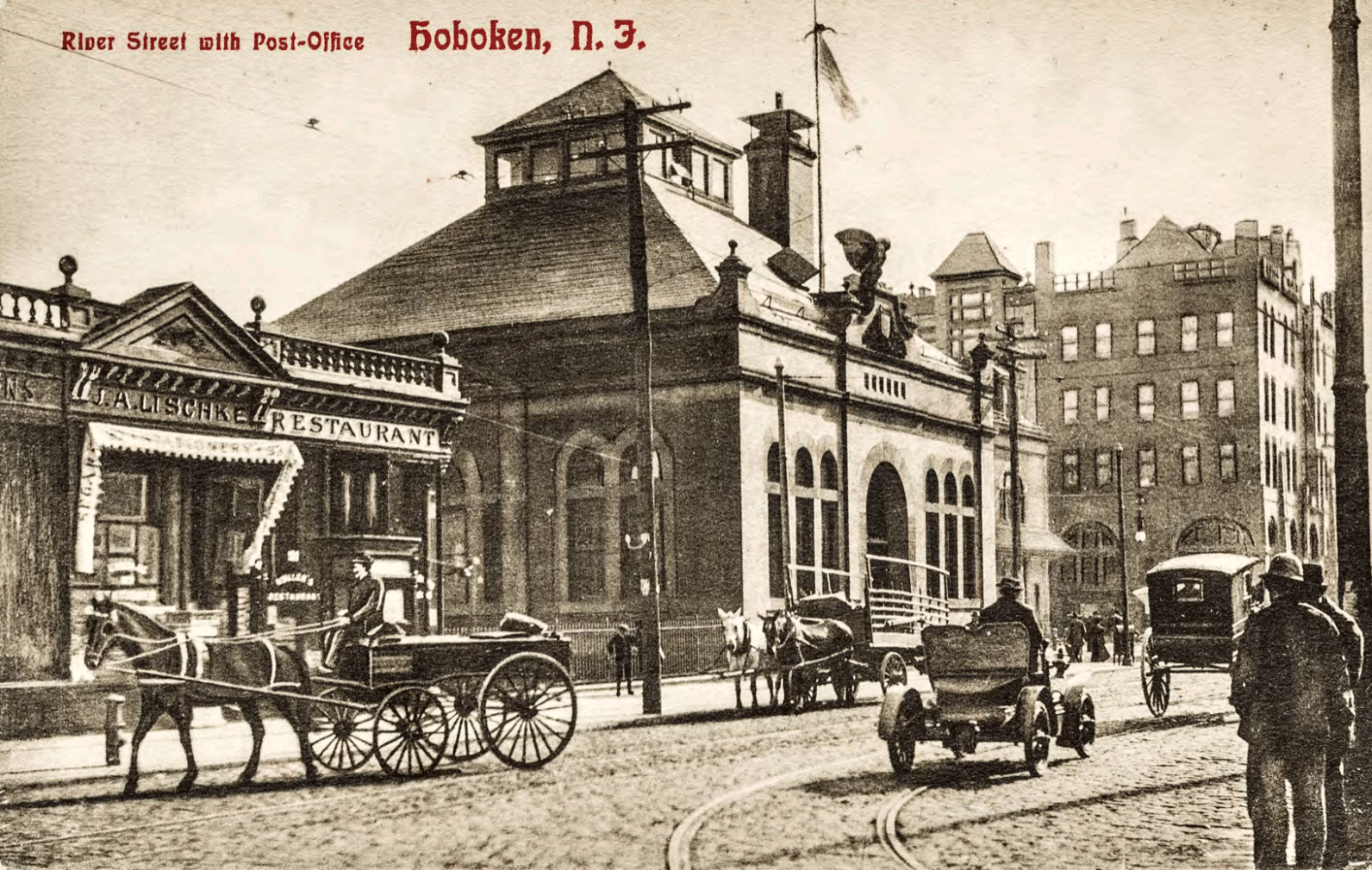
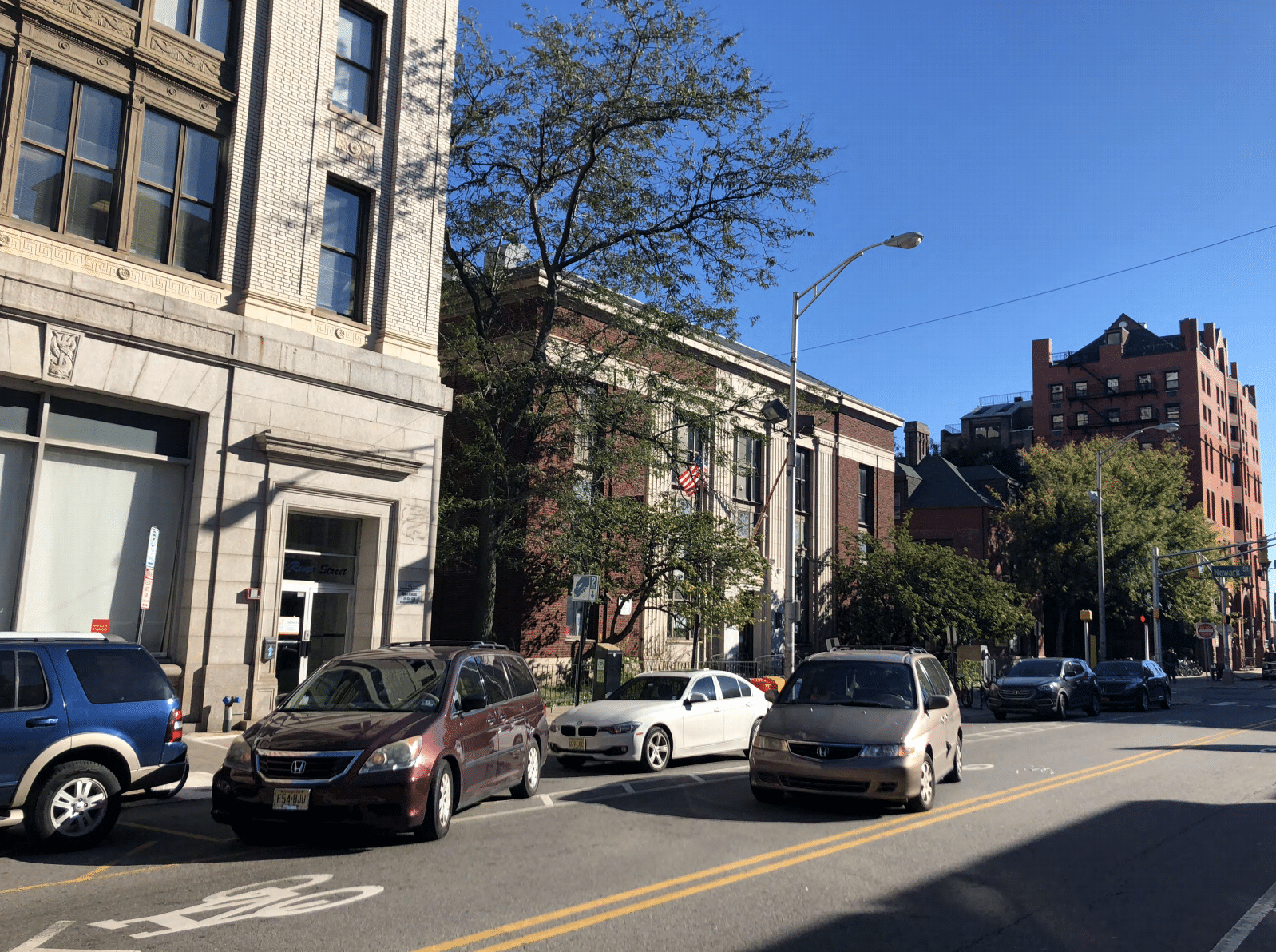
The original building was built in the 1890s. It was a federal-style building complete with large windows and gothic architecture. It wasn’t the first post office in town, but it was the first building dedicated to the postal service. The original building was torn down during the depression as it was not well maintained and began to fall apart. To the left of the post office was a German travel agency where customers could purchase tickets to Germany via ships. Hoboken was home to a large German population during its first founding years, as stated in the book, Immigrants in Hoboken by Christina A. Ziegler-McPherson. The post office was rebuilt from the ground up to provide jobs as a part of the Workers Project Administration {WPA} project and to revitalize the neighborhood.
Read more: A Hidden Gem: The {Hoboken} Historical Museum
Then: Columbia Club, Now: Residential {1101 Bloomfield}
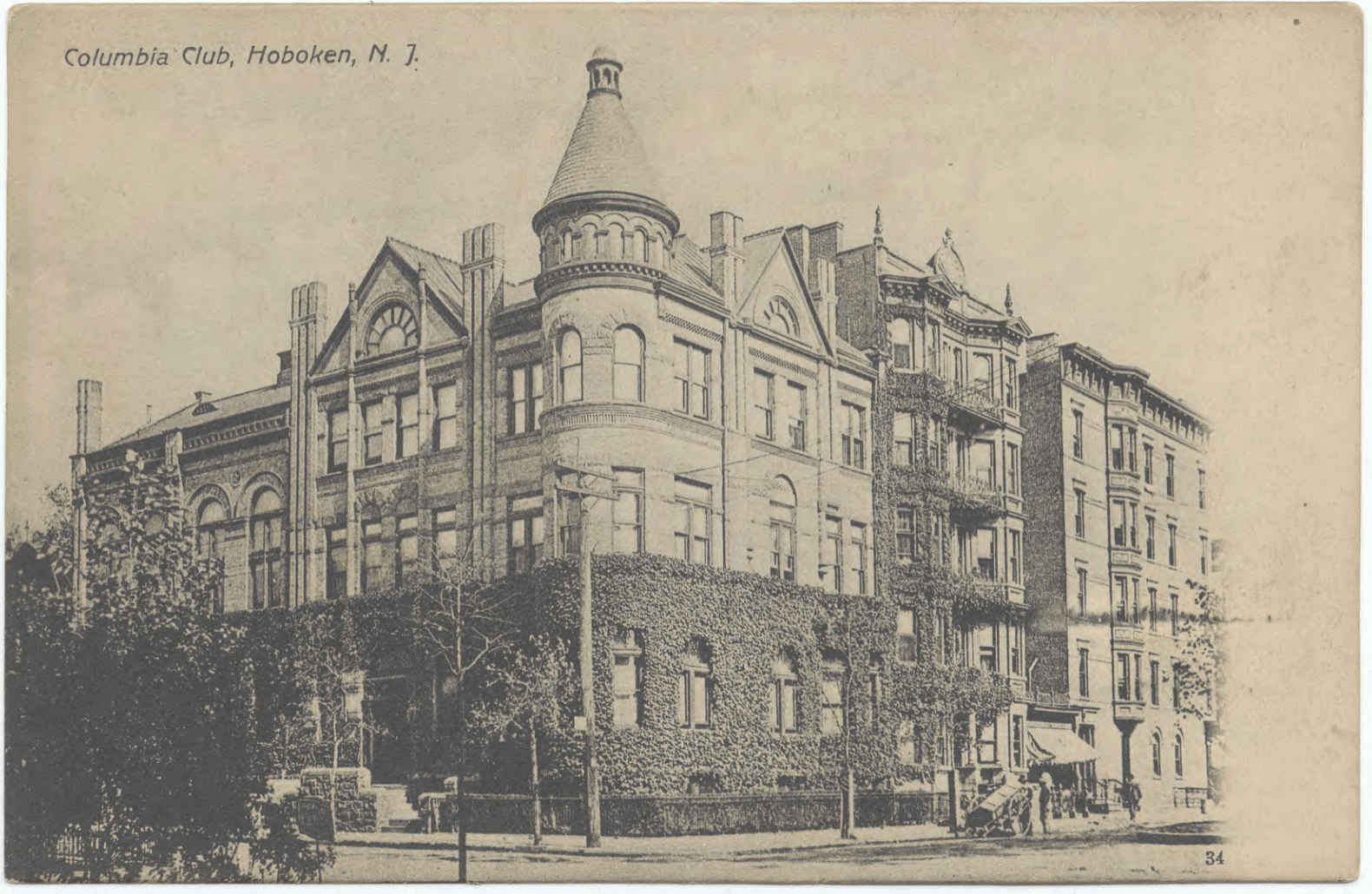
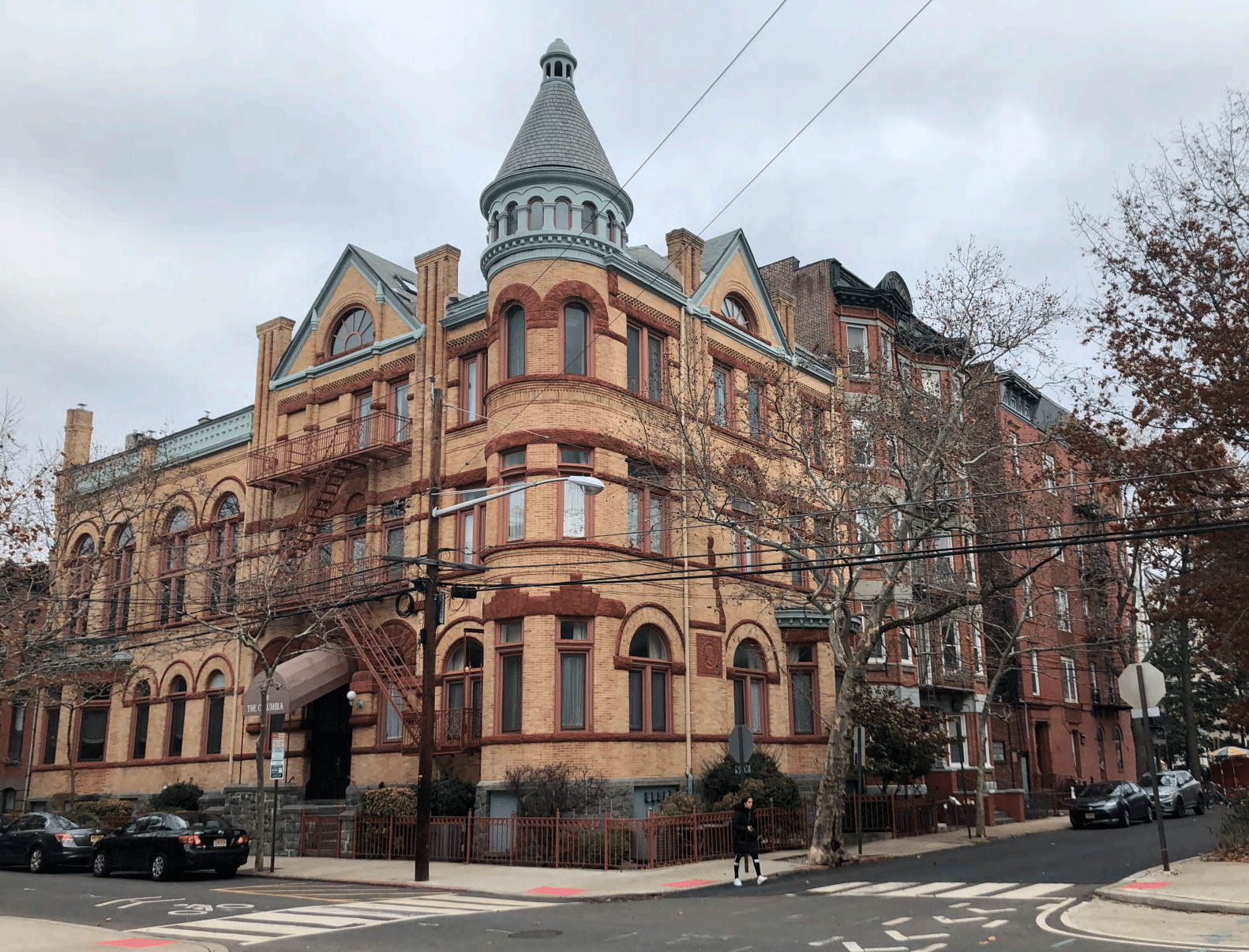
The building served as the Columbia Club circa 1891 to 1920 and the front awning of the building still reads “Colombia.” The club was a hub for Hoboken’s elite. Members went there to socialize, play pool, host events, and more. In 1917 it was purchased by the Euclid Lodge No. 136 Free and Accepted Masons {F.&A.M.} and became Euclid Masonic Temple. Between 1917 and 1918, WW l soldiers from the union went through there, many of them masons, as Hoboken was a strategic port of embarkation. It then became an evangelical church for a time. Today, this building is a residential home. The interior, however, is still impressive with its 14ft ceilings and four large condo units.
Then: U.S Theater, Now: Haven Savings Bank {621 Washington Street}
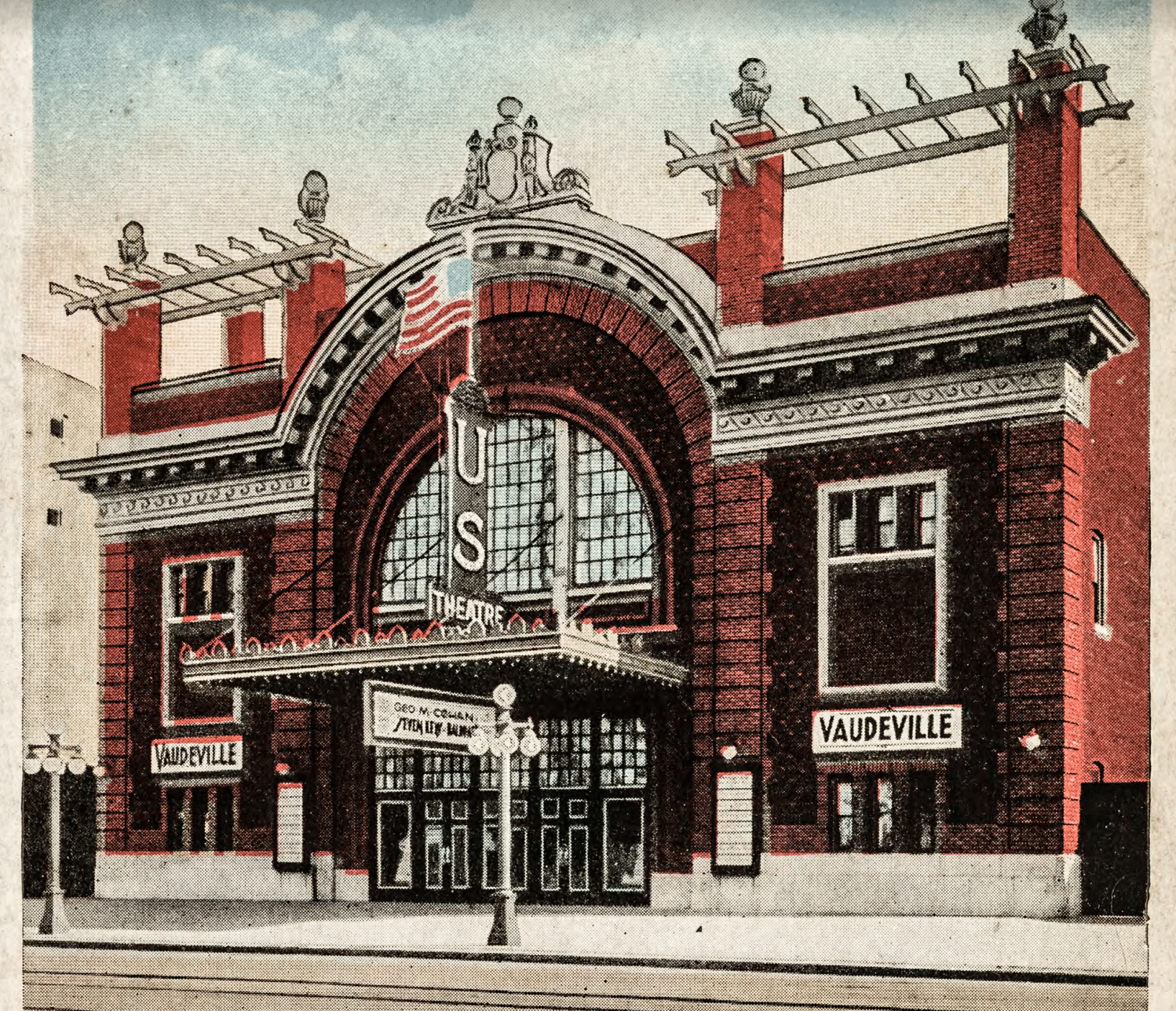
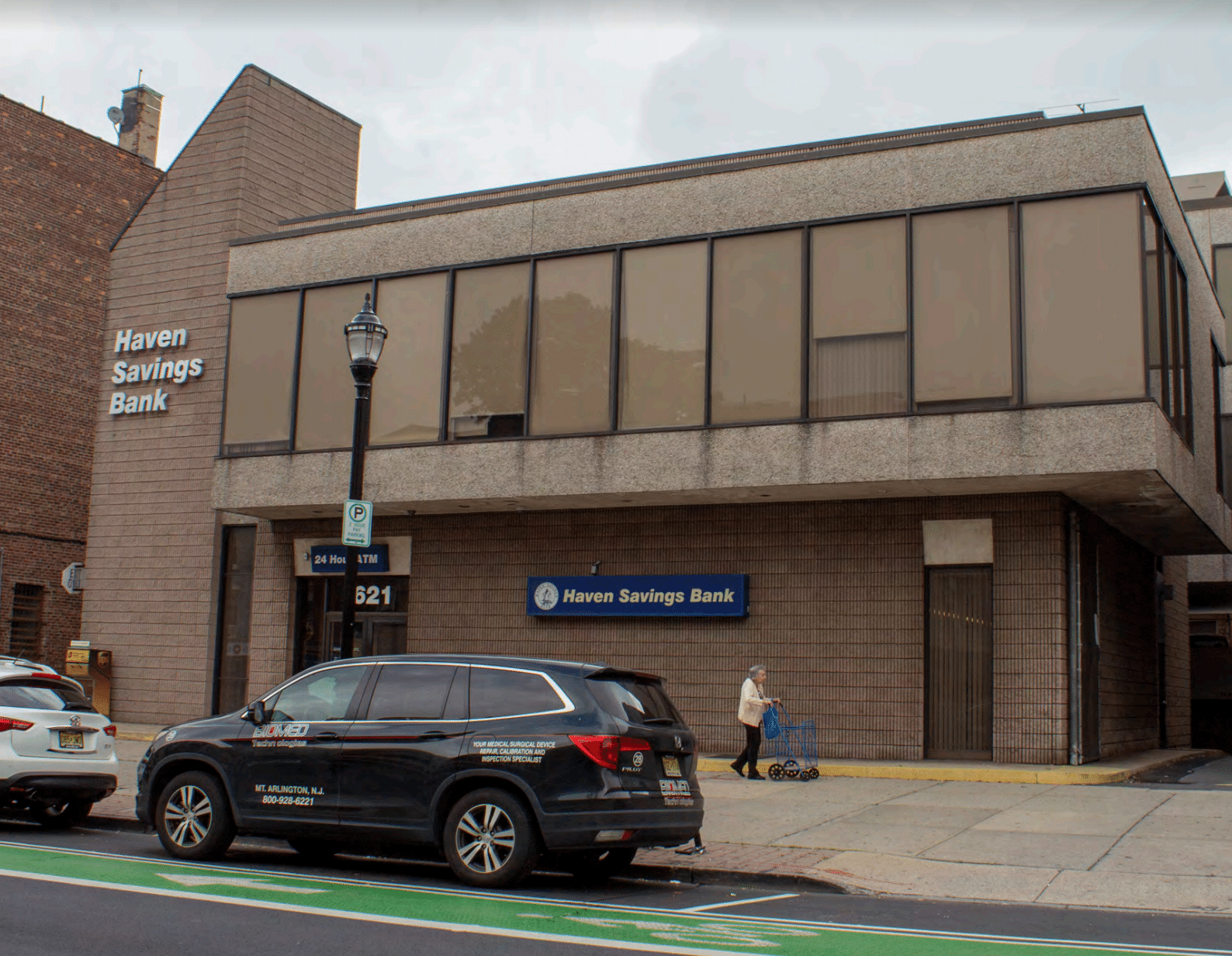
The U.S. Theater was opened in 1914 and operated until circa 1955. It was one of many theaters in Hoboken. The building had a classic theater design with brick walls, detailed molding, elaborate decor, and all-around opulent architecture. In the 1980s after its closing it became known as the “scratch house” by locals, as it became infected with fleas due to the neglect. Now, the building has become a branch of Haven Savings Bank.
Then: The Hoboken Riding Academy and Horse Exchange, Now: Port Authority Parking Lot {215 – 223 Hudson Street}
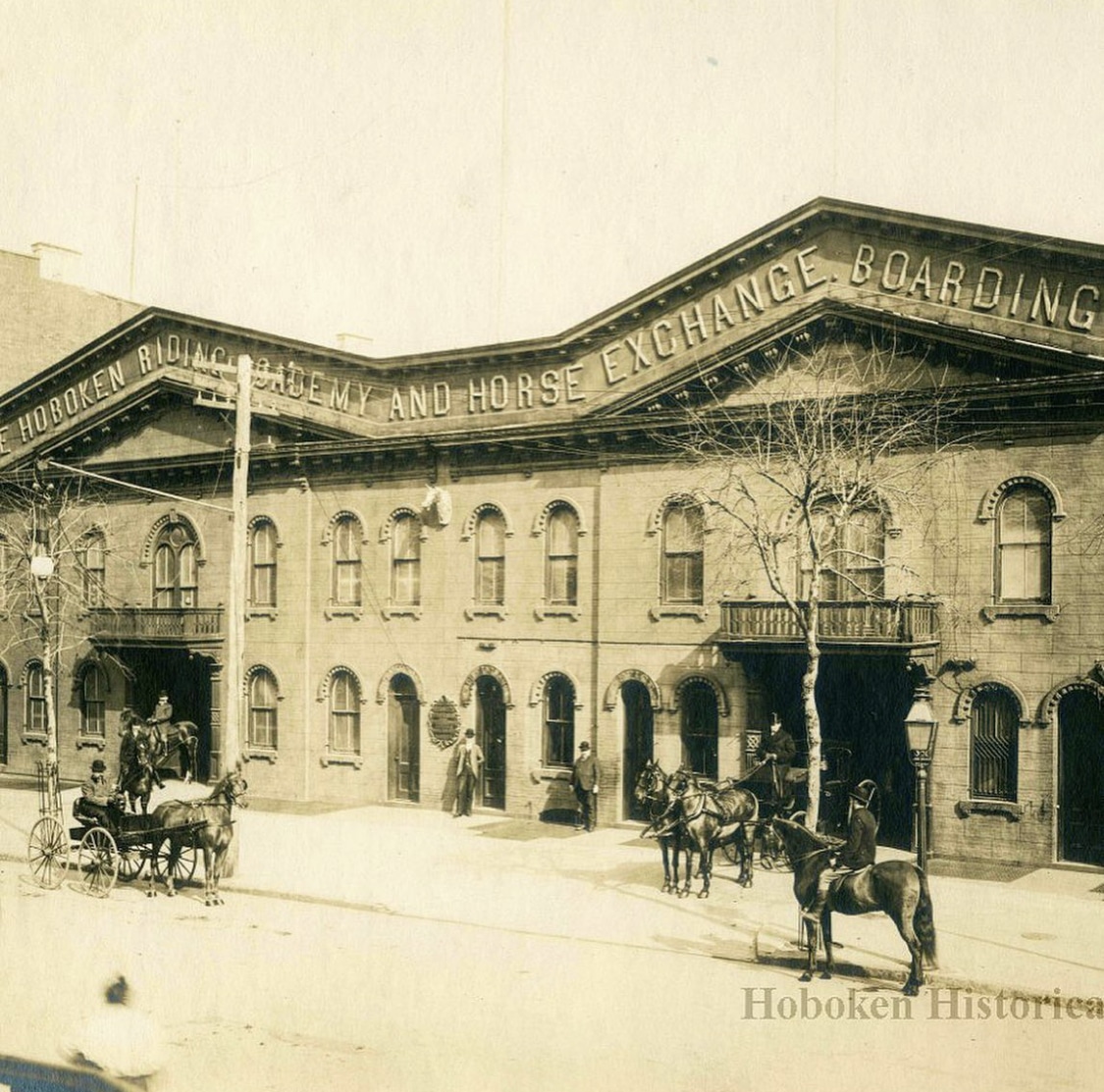
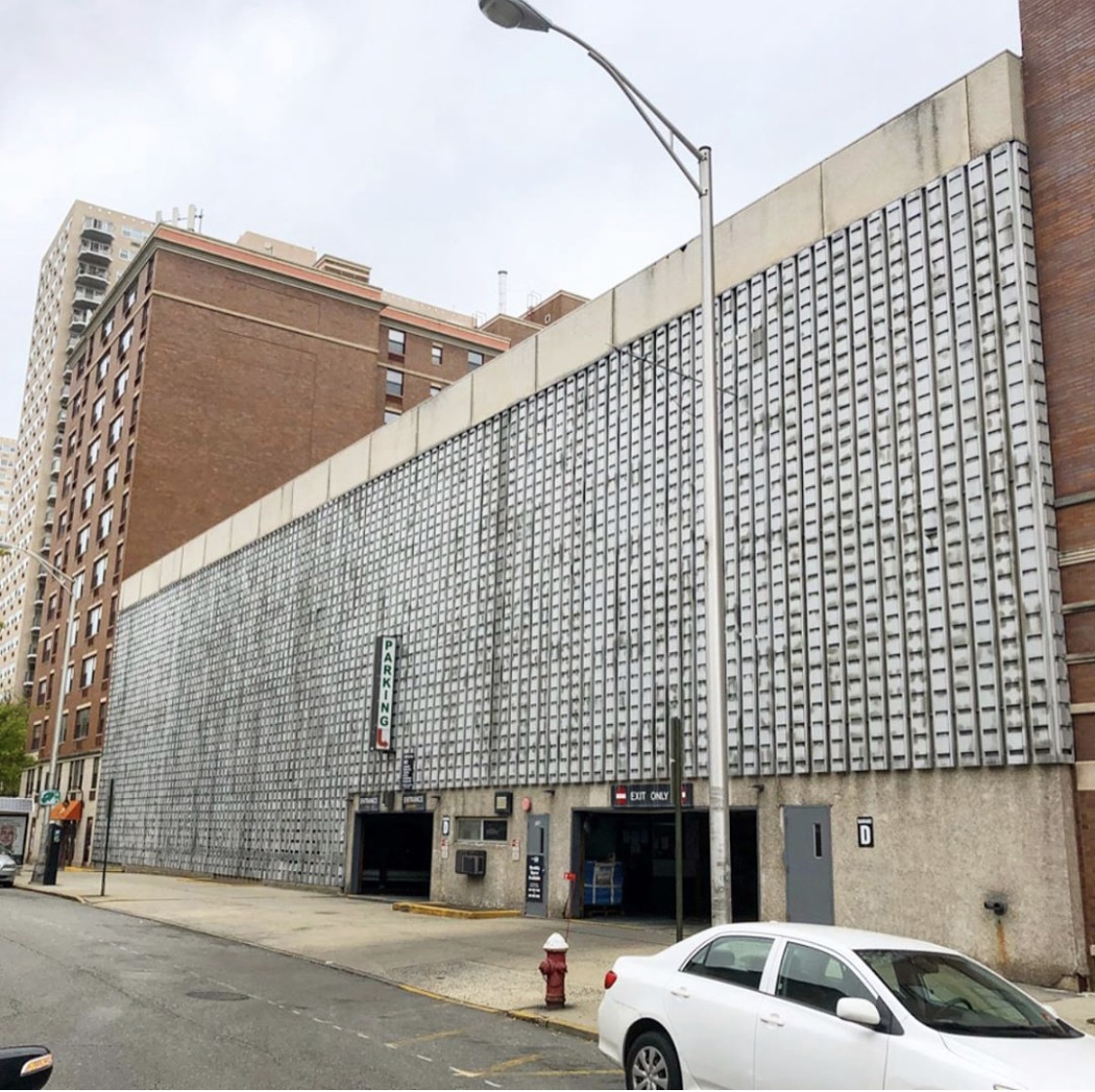
The academy was founded in 1850 by Colonel William Hexamer, a Civil War veteran. Colonel Hexamer commanded an artillery battery at the battles of Antietam and Fredericksberg, among others. The colonel owned most of that side of the street. In 1915, a son of Colonel Hexamer added a Hoboken Auto Company to the property, but all of the buildings were destroyed by a gasoline fire later that year. Now, the building is a Port Authority parking garage and the neighboring blocks he once owned are home to the Marine View apartment buildings.
Then: Brook’s Store Souvenir Postcards, Now: Napoli’s {1118 Washington}
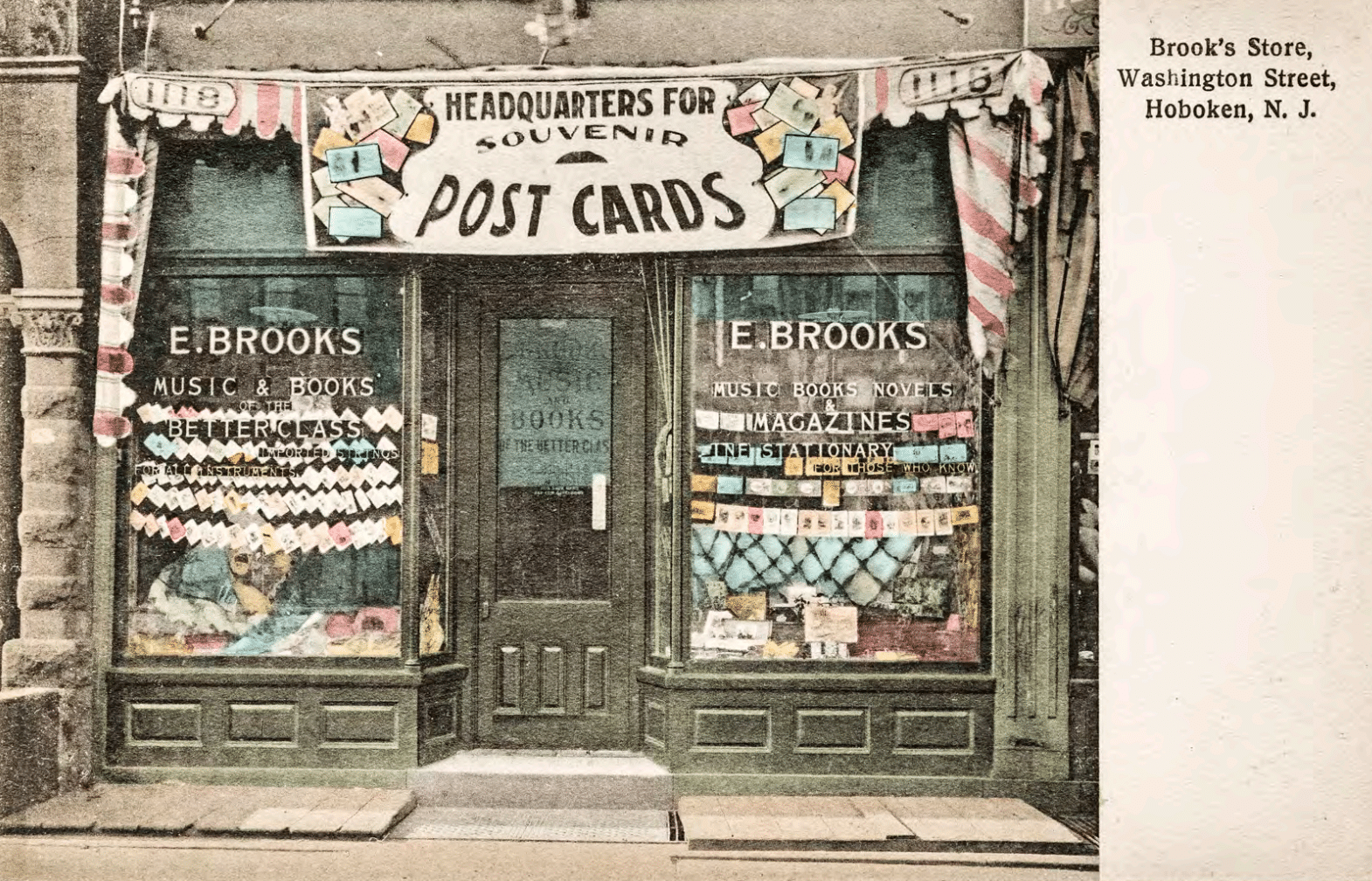
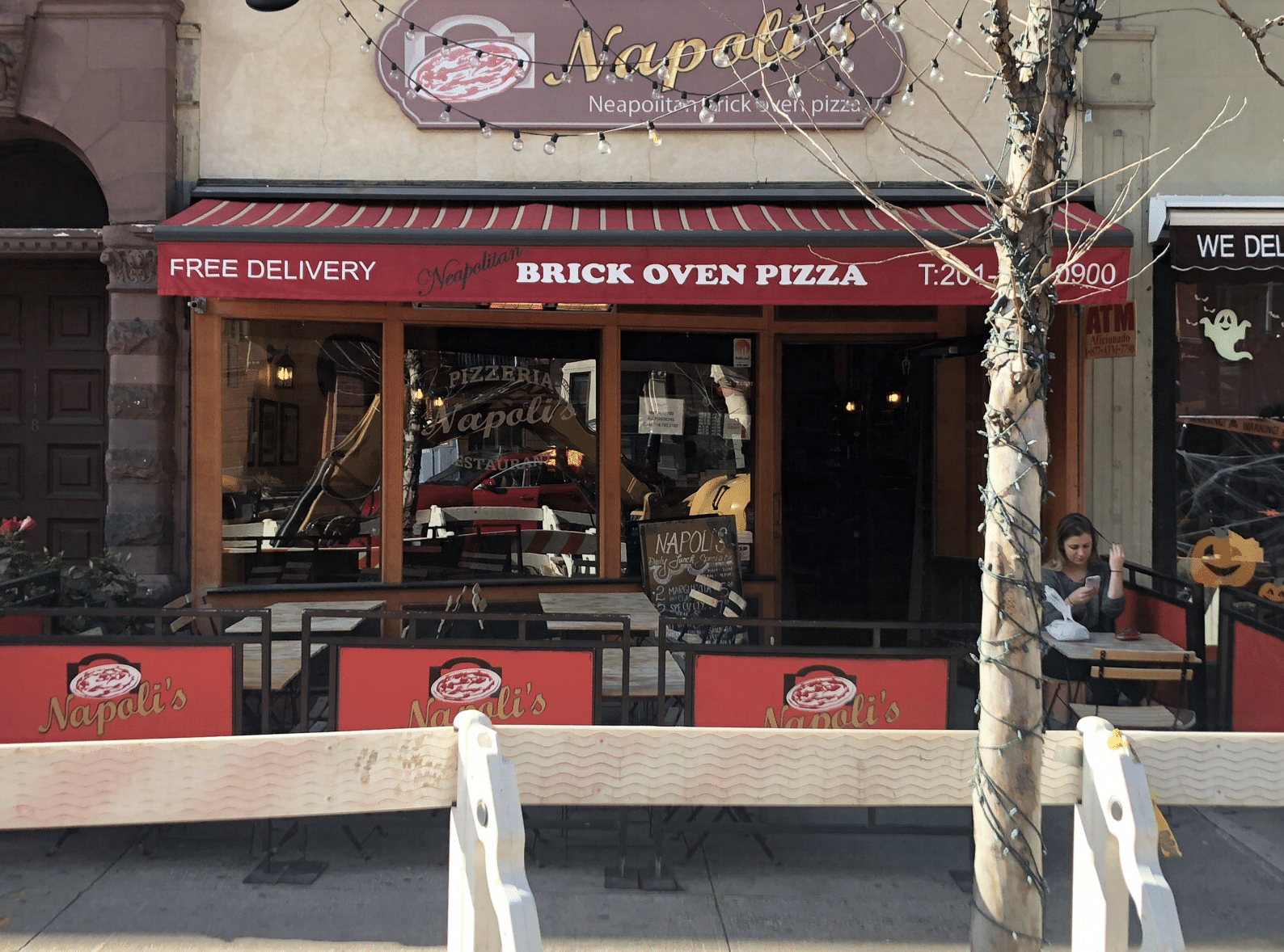
This building was formerly a high-end gift shop and stationery store. This shop was one of the many businesses that sold postcards as well as other writing materials. Postcards were a major part of communication that were heavily relied on, especially because they used to cost only a penny. The mail used to be delivered twice a day, making it easy to fill out a postcard and send it out all in the same day. Now, this building is the original Napoli’s Pizzeria location that opened in 2007. Since then, the pizzeria has opened a second location on Grand Street. Napoli’s pizzeria is known for its Neapolitan style pizza, fresh pasta, paninis, and wraps.
Then: Hoboken Trust Company, Now: SoulCycle {59 Washington Street}
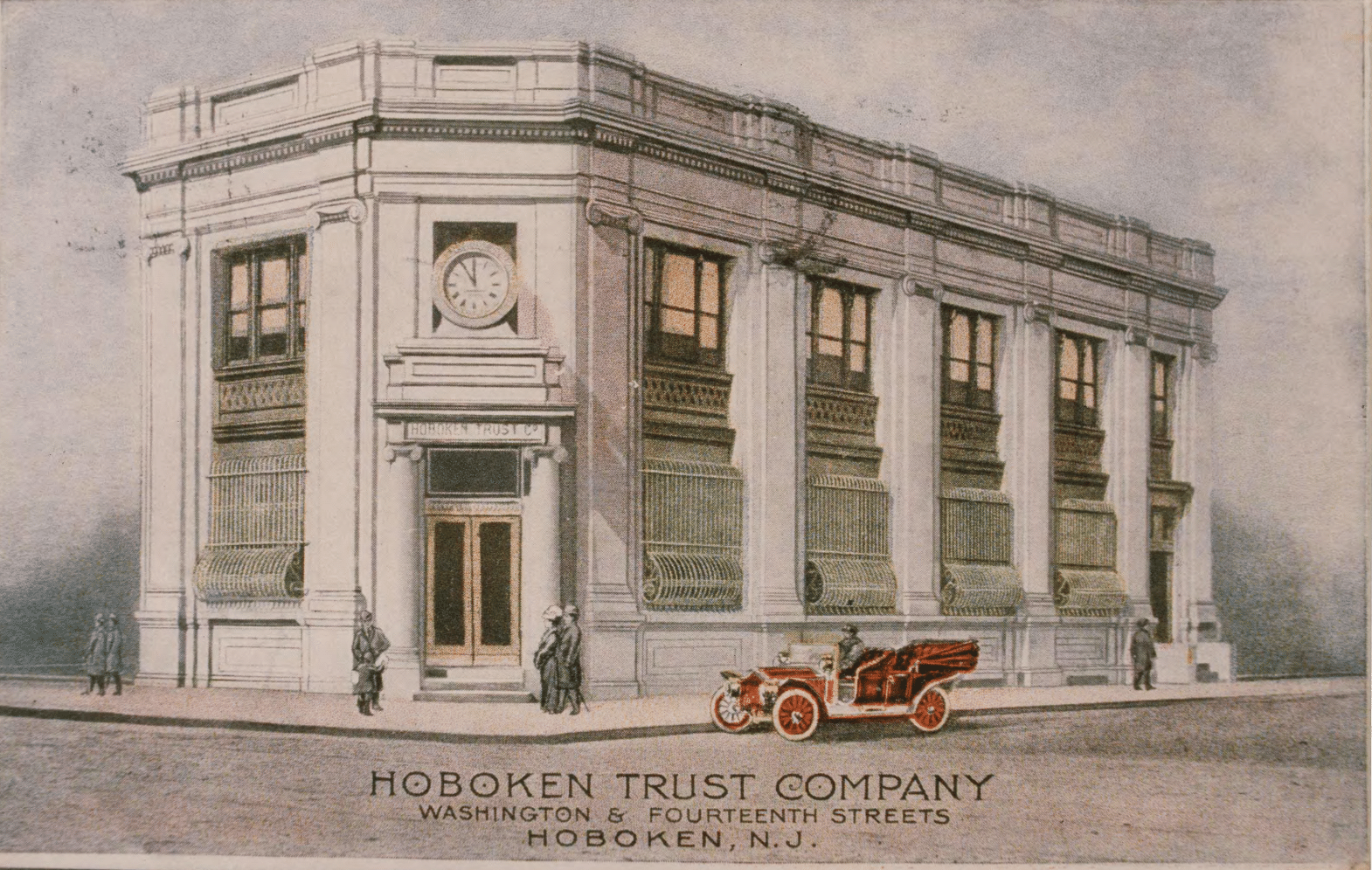
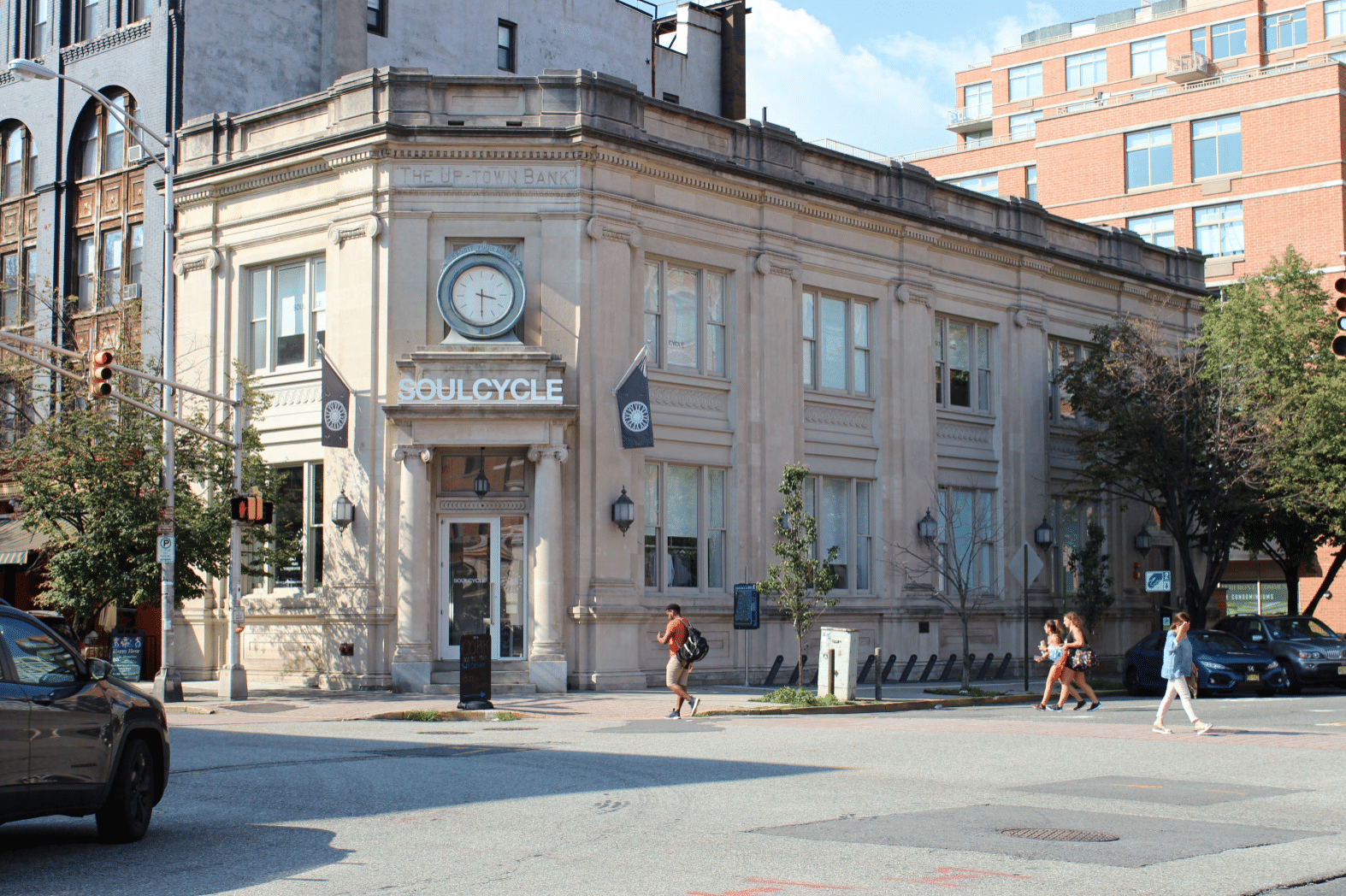
This building was the Hoboken Trust Company, also known as the UpTown Bank. The original building remains the same, with renovations done only within the interior. The exterior still reads “UpTown Bank,” and displays the clock that was placed there when the building was built. Much like this one, when banks were first created, they were strategically built to have a strong, sturdy, and reliable appearance so that people would feel confident to leave their money inside them. The architecture is traditional, with a brick foundation. It later became the headquarters for the Hudson Reporter. Now, it has become a SoulCycle branch that opened in 2018.
See More: Who Discovered a Hoboken? A Brief History
Lackawanna Terminal Waiting Room {1 Hudson Place}
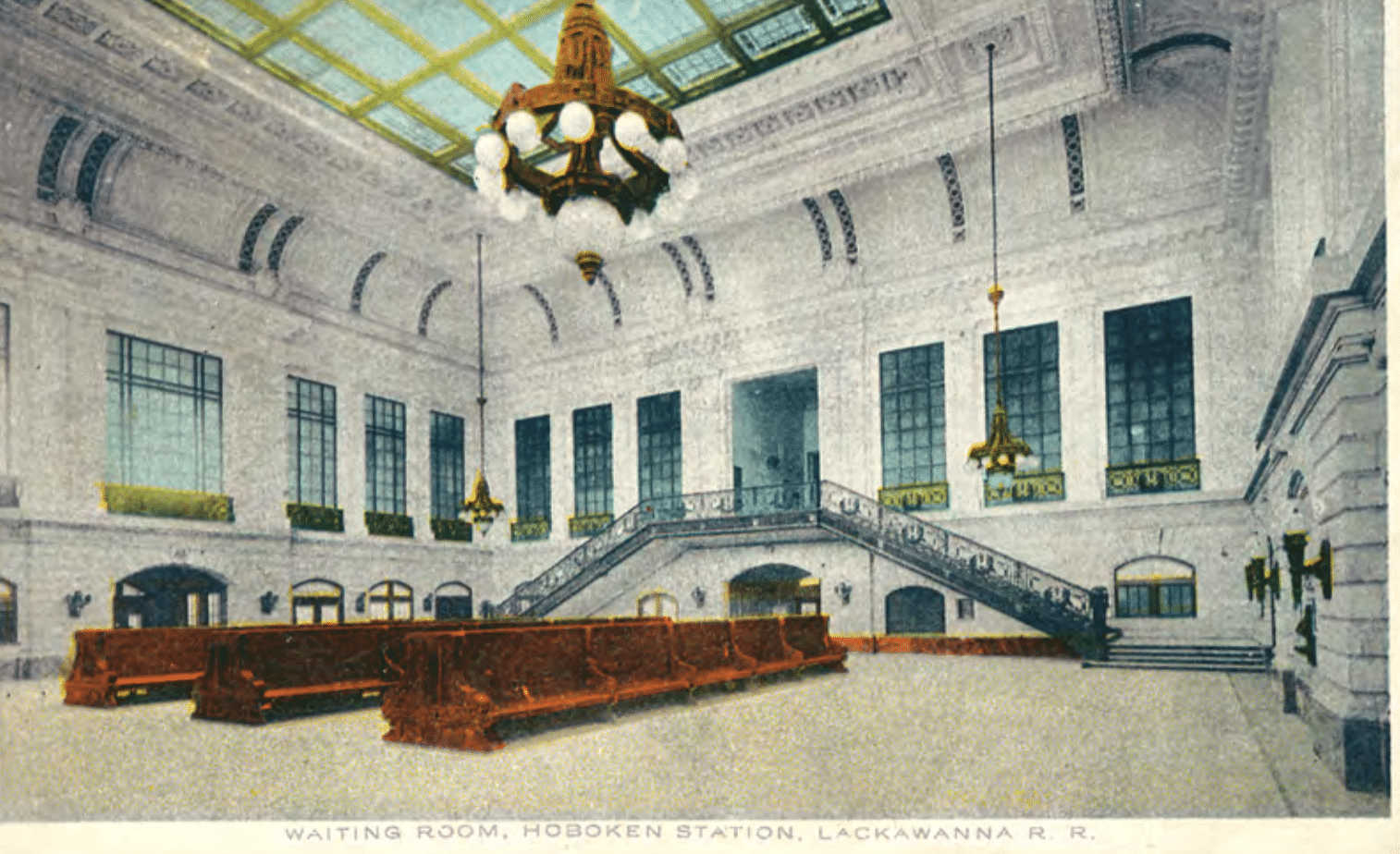
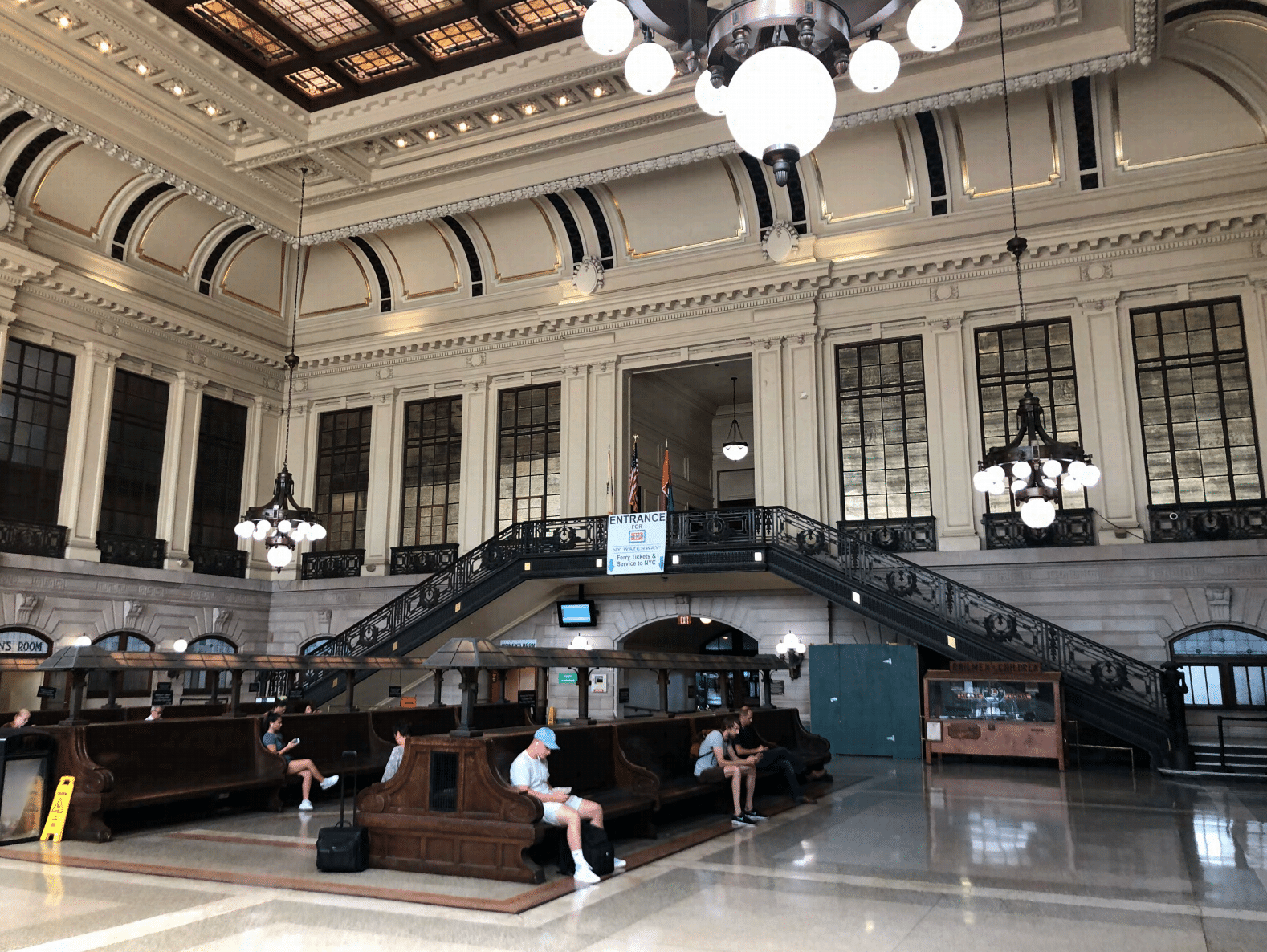
The Lackawanna Terminal was built in 1907. It’s a remarkable architectural and engineering creation that is on the National List of Historic Places. The waiting room is a design feat of its own. Walking into the room is like stepping back in time. The original floor plan remains the same with the buff limestone, French-inspired motif plaster, marble staircase, cast iron railing, shoe-shine station, benches, and Tiffany glass skylights. Two original banks of telephone booths and ticket stations are still present. The design of the waiting room plays a large role in the building’s national architectural significance. The staircase leads to the upper level concourse that connects to the ferries.
Elysian Cafe {1001 Washington Street}
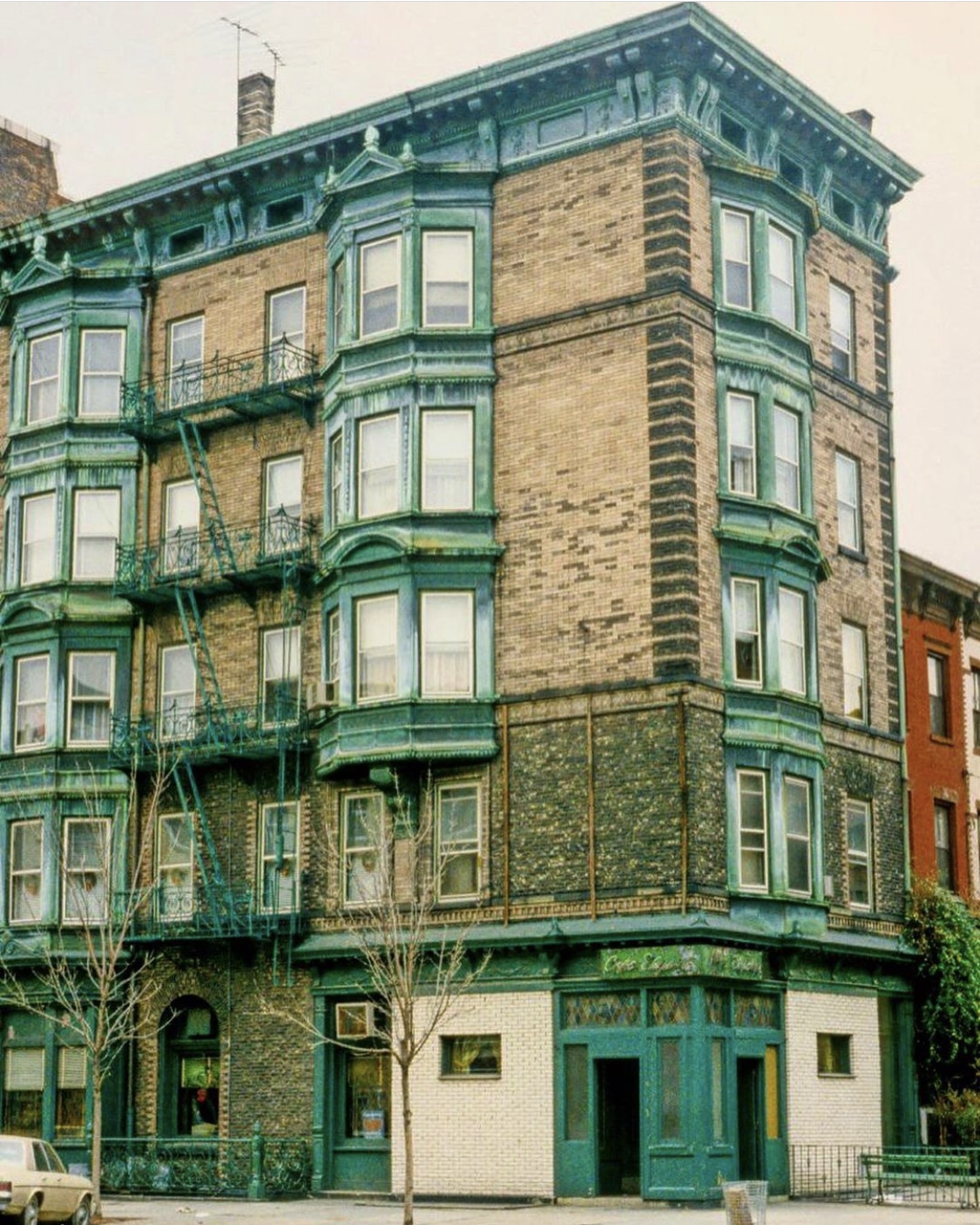
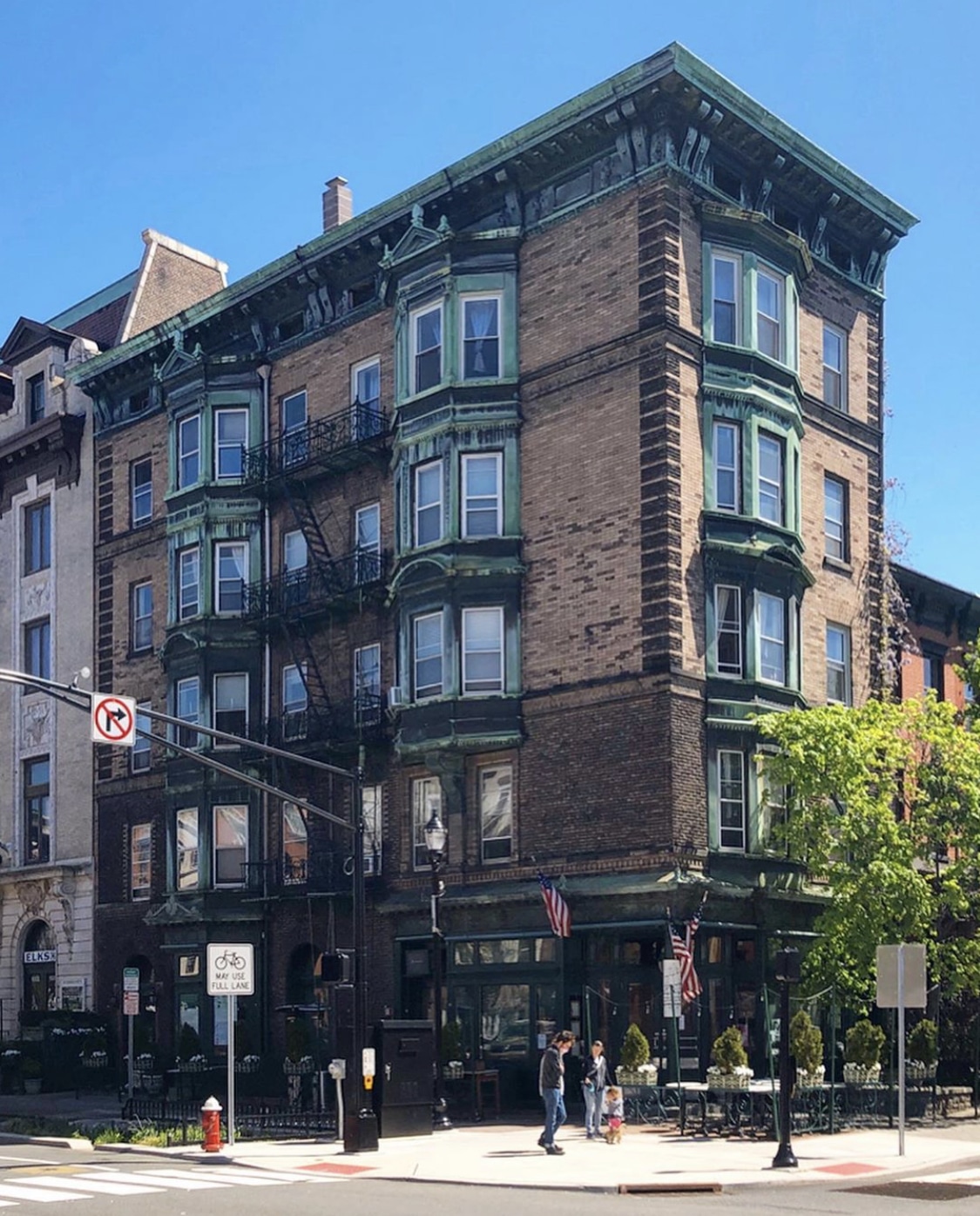
The Elysian Café is the oldest continually operated bar/restaurant in Hoboken. It originally opened as Dillenger & Jeffson’s in 1895. It continued through prohibition as an ice cream parlor and as a hair salon. Elysian currently offers a French bistro-style menu and remains a staple in the community. The building remains the same and the back room has its beautiful plaster ceiling intact.
Then: Fabian Theater, Now: CVS {59 Washington Street}
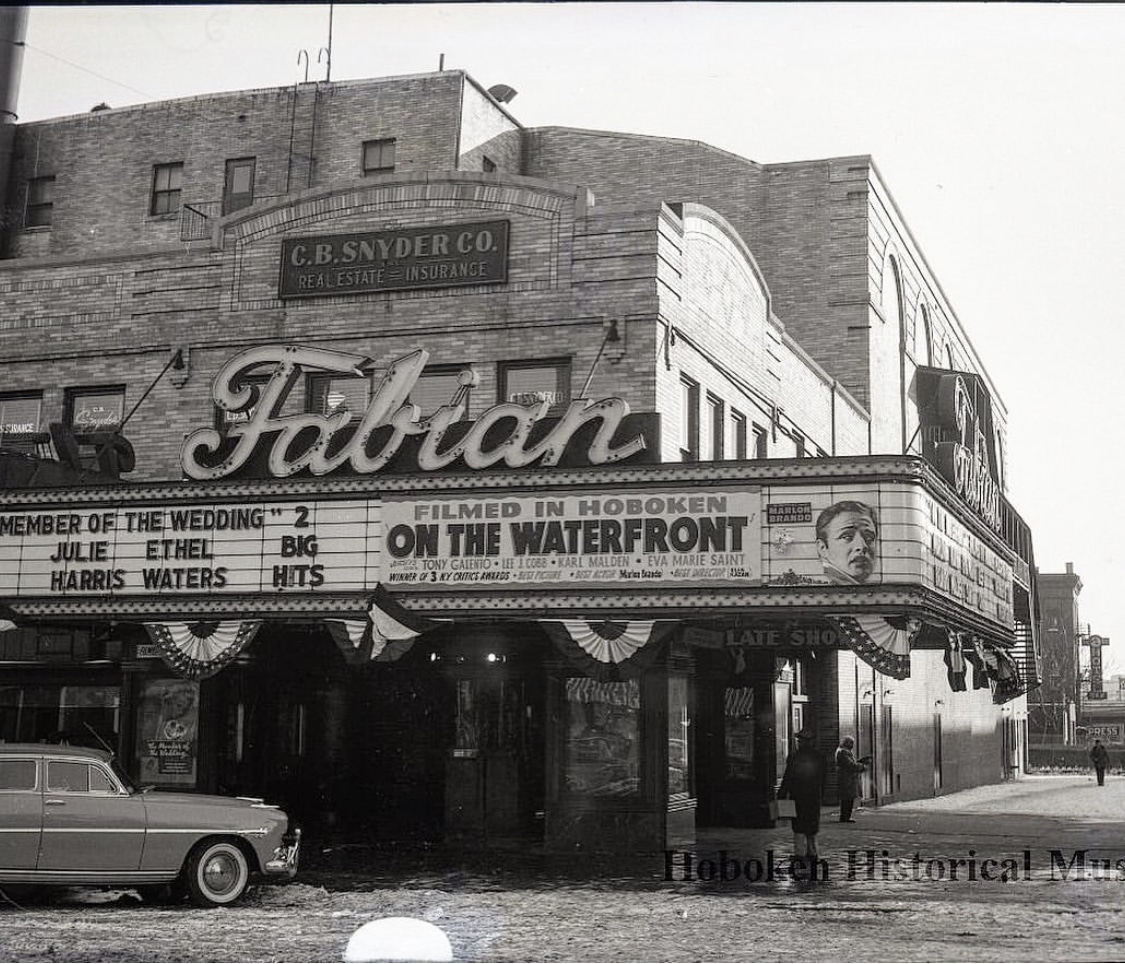
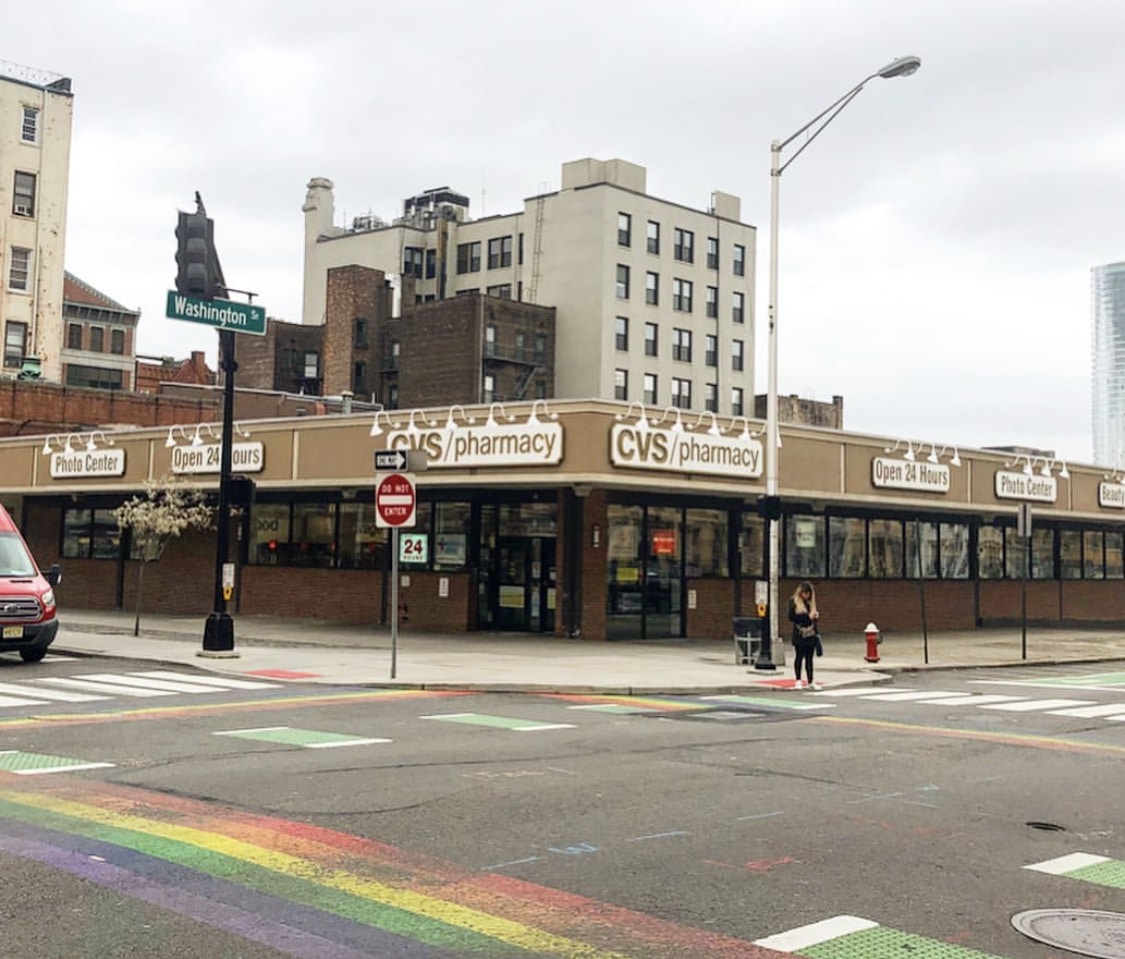
The Fabian Theater operated from 1928 to the mid-1960s and was the last theater in town to close down. Located on the southwest corner of Newark and Washington Street, Hoboken’s largest theater took up nine average-size lots. It’s elegant auditorium seated 3,500 patrons. A luxurious chandelier hung in the middle of the room, extravagant drapery framed the stage and every inch of wall had crown molding, and ceiling medallions. It was a work of art — truly a grand palace of theaters. Visitors could watch vaudeville, variety shows, and movies. Live appearances by entertainers included Frank Sinatra, James Cagney, as well as Abbot and Castello. In 1968, the building was demolished and is now a CVS.
Then: Lipton Tea Warehouse, Now: Hudson Tea Building {1500 Washington Street}
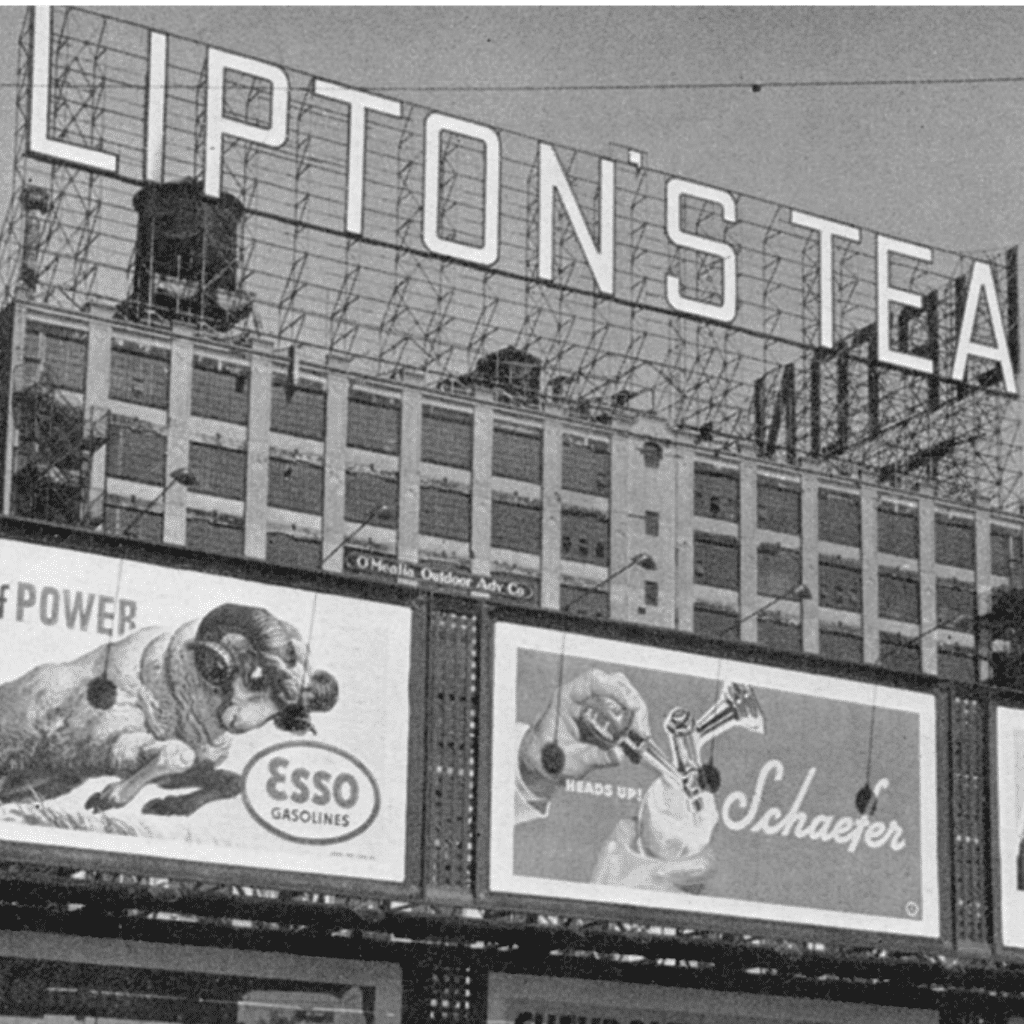
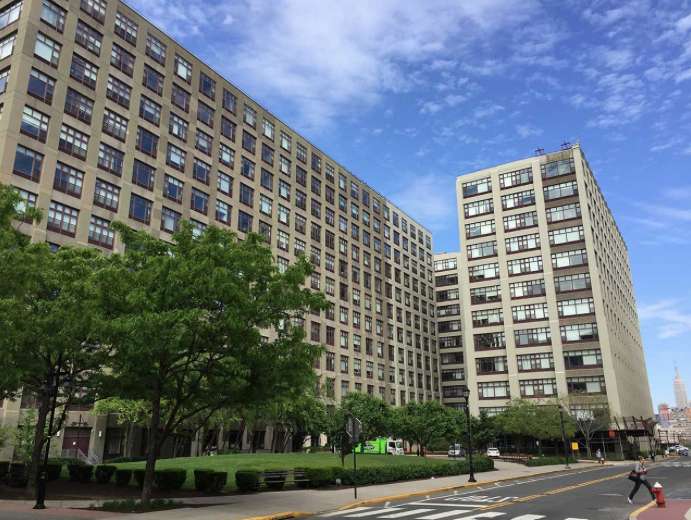
The building was built to be a commercial warehouse with concrete walls. Later, it became the Lipton Tea Warehouse, owned and operated by Sir Lipton. It became his main packaging and manufacturing center for his Sri Lankan tea plantation. Hoboken made it easy for shipments to be imported and distributed across the U.S. because of its proximity to the ships and other transportation systems. In the late 1990s, the property was renamed the Hudson Tea Building, was converted into rental apartments and eventually transformed into condominiums.
Hoboken Public Library {500 Park Avenue}
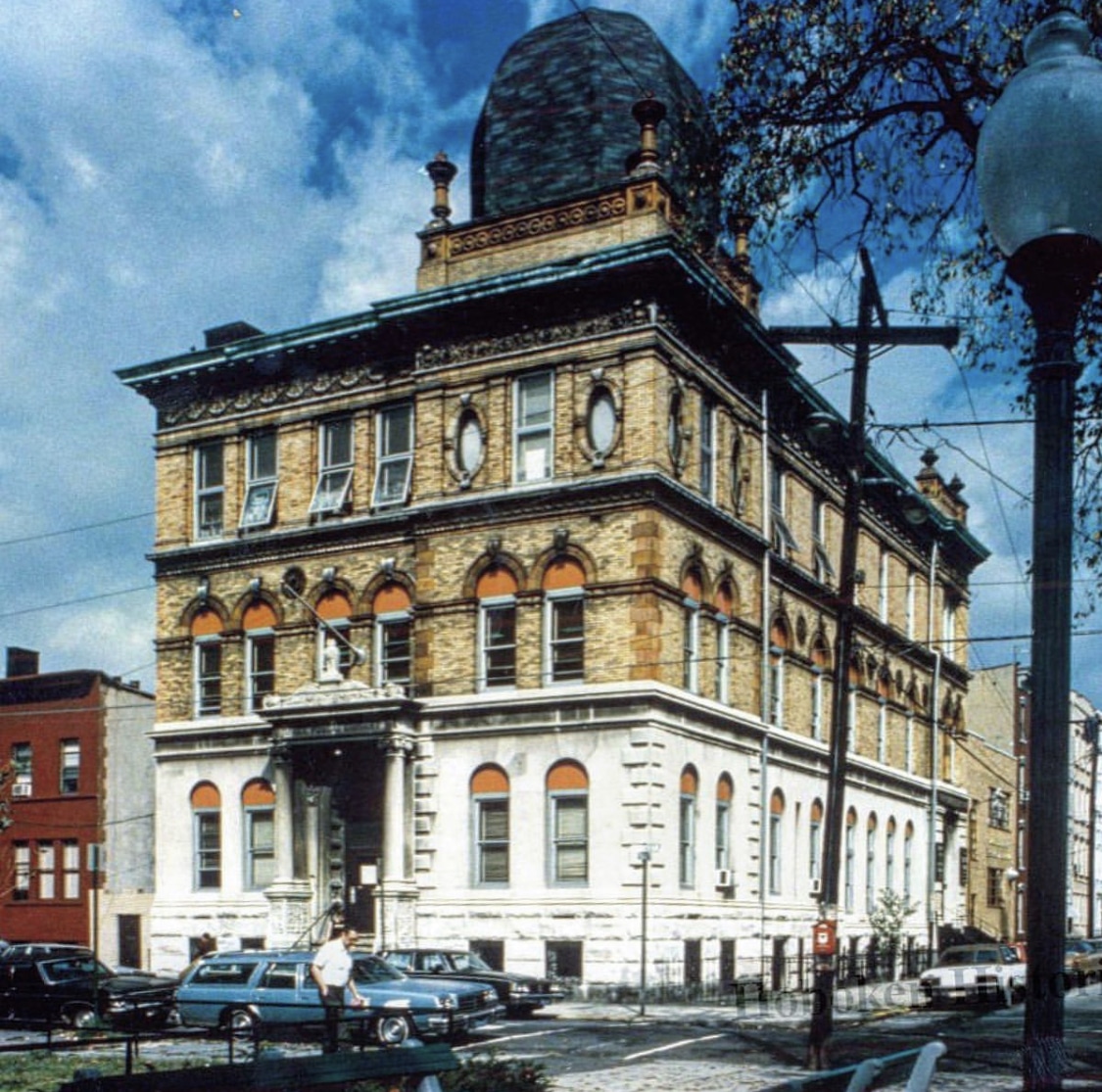
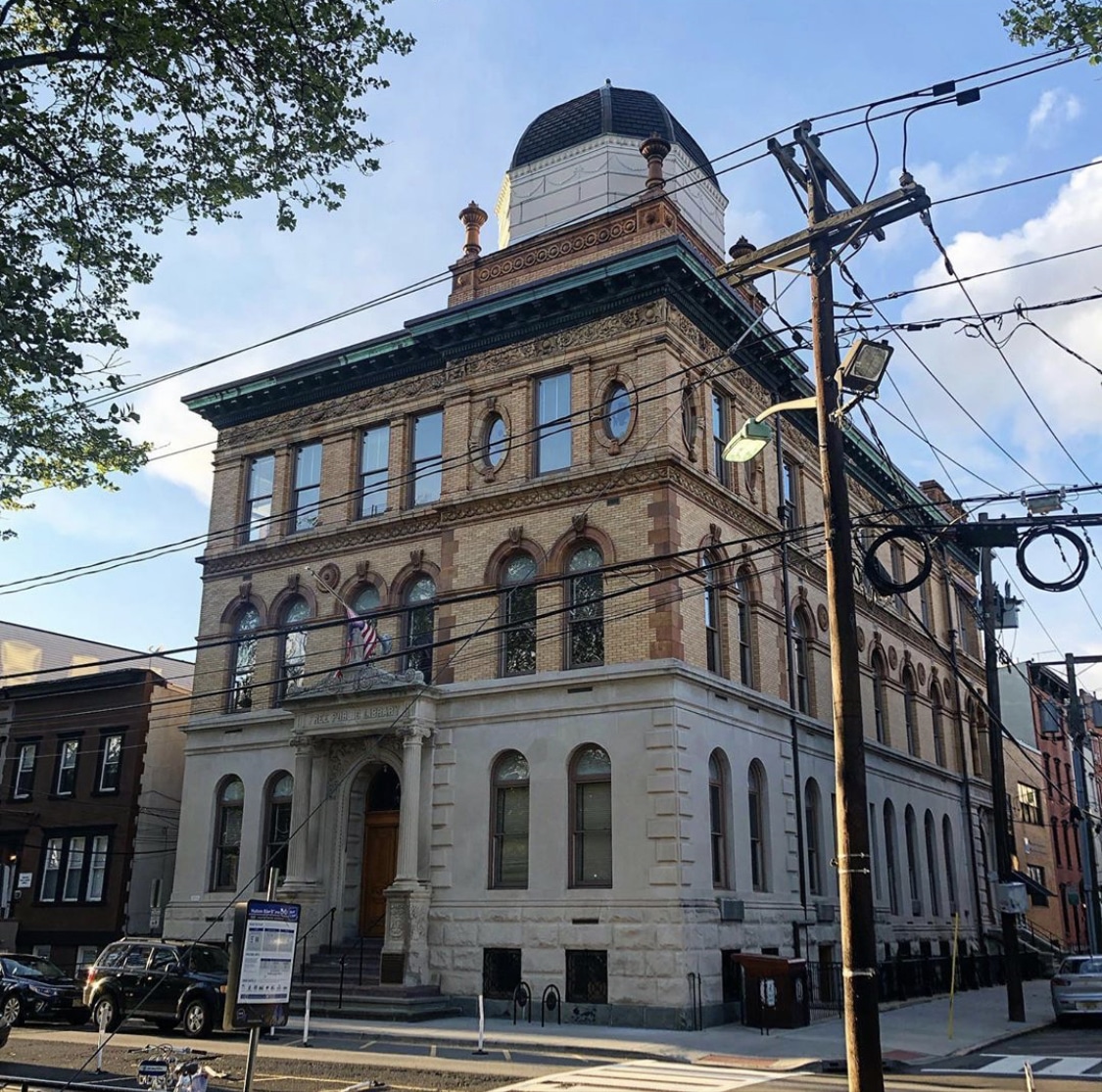
The Hoboken Public Library was established under the NJ General Library Act of 1884. It is on the National List of Historic Places. It was the third library established under this act, following behind Paterson and Newark. In 1890, the library opened in the basement of the second National Bank Building with 3,500 volumes on the shelves. In 1897, the building was fully dedicated to the library and the new building opened to the public. In 2018, the library received a major renovation that included programming rooms, a multipurpose room, used book sale area, and an outdoor reading garden. The exterior and interior of the building is largely the same with minor adjustments made.
Hoboken Elks Club {1005 Washington Street}
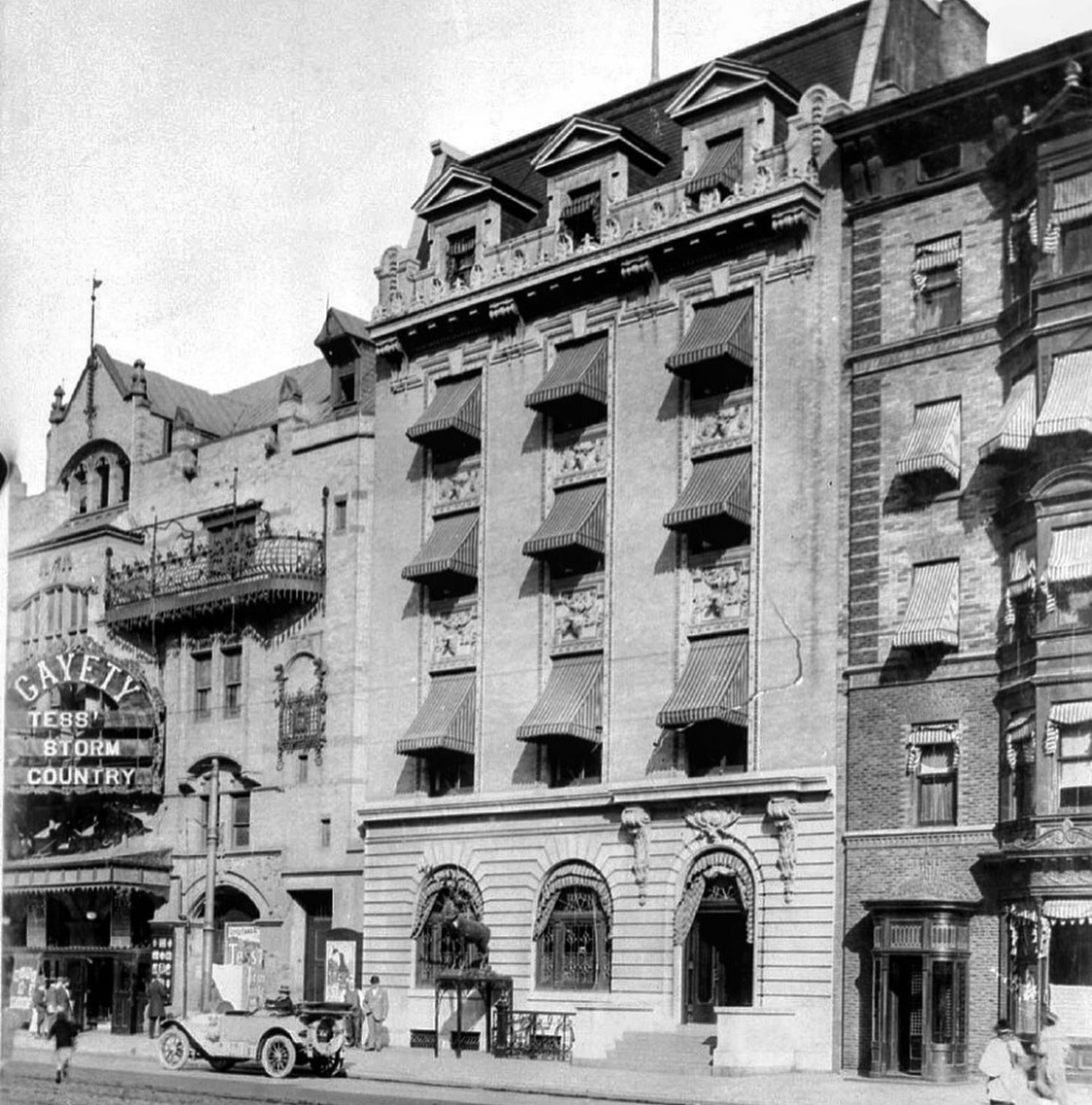
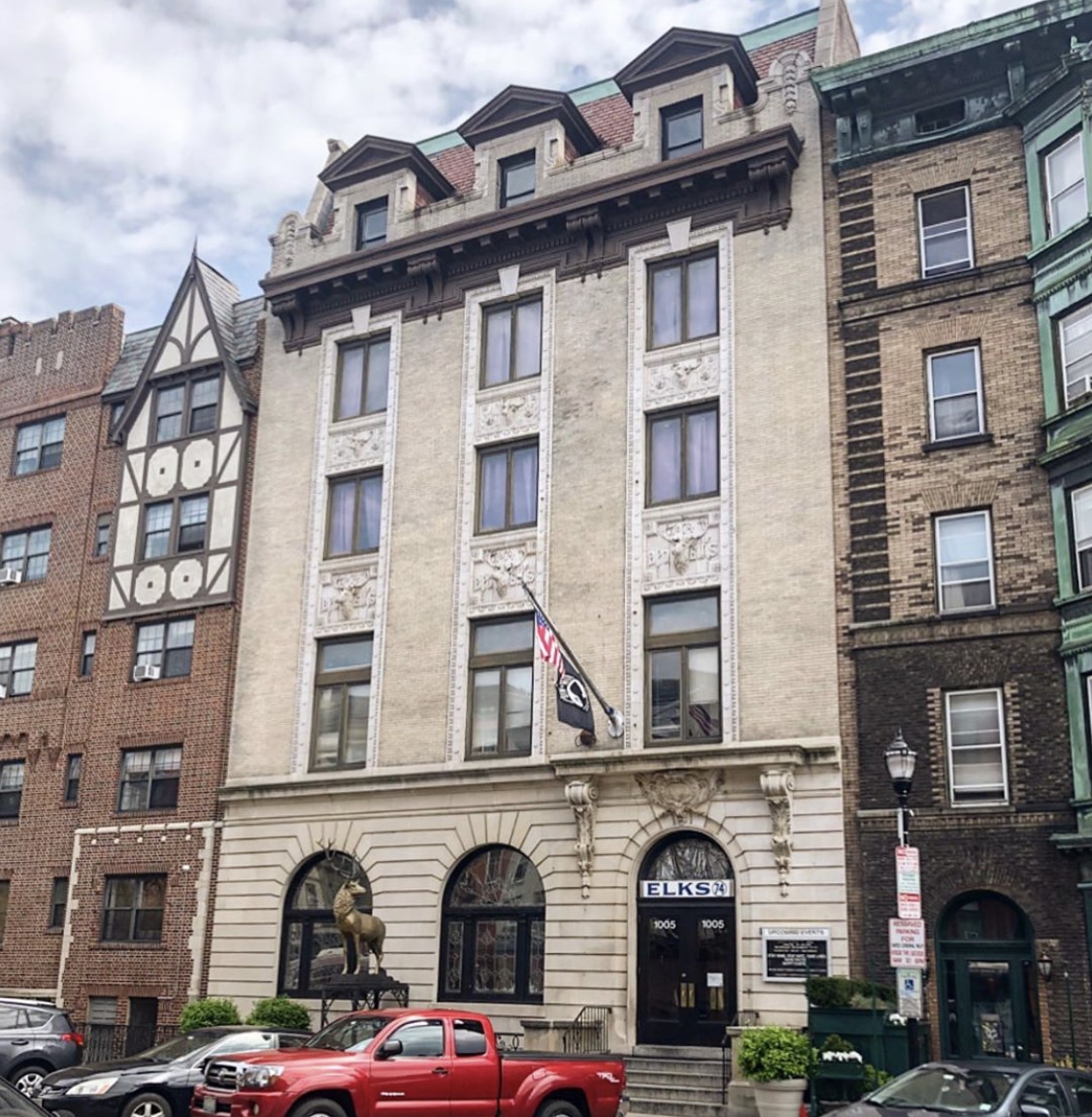
The Elks Club was completed in 1906, and is the oldest lodge in New Jersey. It was a model for future lodges across the country. The building included a meeting room, gymnasium, game room, and a first class restaurant. Later, it added bowling alleys in the basement. In its early stages the Hoboken Lodge {the elks} met at Cronheim’s Theater and in the clubrooms of the Quartette Club. As membership grew and the lodge prospered, members dedicated their efforts to finding a suitable location for a lodge building. The lodge became a Red Cross bandage preparation site during World War I and continued to be a volunteer center when needed. Out of all of the organizations in town, the Elks Club has survived and remains open.


